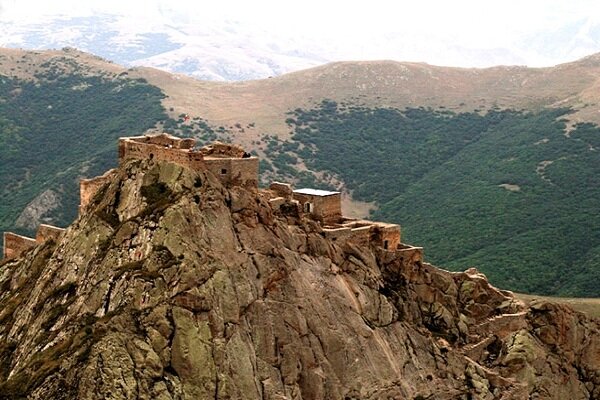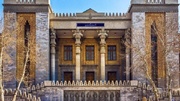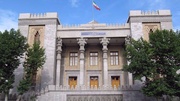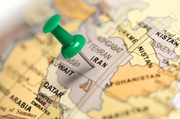Babak Fort, also known as the Immortal Castle or Republic Castle, in East Azarbaijan Province is located on top of a mountain with 2600 meter height in the Arasbaran forests, 6 km southwest of Kalibar City in northwestern Iran. It is known as the most glorious stone castle of Iran.

It is a magnificent and beautiful monument that was the stronghold of Babak Khoramdin, a patriot and militant leader against invaders.
Babak Khoramdin was one of the Iranian commanders of Azarbaijan and main Persian revolutionary leaders of the Iranian Khoramdinan, which was a local freedom movement fighting the Abbasid Caliphate. He persisted against Abbasid for 22 years and gave his life for it.

The fort is one of the greatest examples of Iranian architecture. It consists of several stone towers and lodging areas stretched in an area of nearly ten thousand square meters, attributed to the Sassanid-era (224–651).
Babak Fort has a multi-story structure in which the main hall has been surrounded by seven rooms all of them ends up in the hall. It was constructed in two floors and has only one entrance gate. There exists a narrow passage about 100 meters high to reach the main fort before the entrance. This passage was under control of guardians in the past in order to check all traffic. There were towers in two sides of the entrance which were the headquarters of guards. The entrance was the only way to enter the fort because of the security issues.

On the eastern side of the fort, there are some reservoirs next to the rooms. The mortar was the materials which were used in building of reservoirs in order to prevent the rain and snow water penetration. In rainy and snowy seasons the tank become full of water that they use it in summer.

Most of the western part is now destroyed, but it seems that it was the place where the troops were guarding and monitoring everything. Staircase is the only way to reach the upper floors; it is located in the northwestern side of the fort. The roof of this reservoirs has been established by barrel and rib vault.

The Babak Fort has been refurbished many times over the years, but its complete restoration is not easy given its geographical location and conditions. Much of the fort's walls have collapsed, and its current appearance is very different from past.
It was recorded in list of national, cultural and historical opuses in 1966 and has been repaired by The Cultural Heritage Organization of Iran.
Iranian archeologists have found many coins and potteries belonging to 13th century in Babak Fort. The objects and tools obtained from the Babak Fortress are carved and glazed potteries that are belonged to early seventh century A.H.

Given that Babak Fort is in a mountainous area, the best time to visit this glorious castle is from April to early June and also from September to October. Access to fort is challenging and involves one to two hours difficult uphill walk. The hike is not recommended for the infirm, elderly or those afraid of heights.
If you are interested in ancient Iranian history, continue your adventure up the Babak Fort on your journey to East Azerbaijan province.
ZZ/



























Your Comment